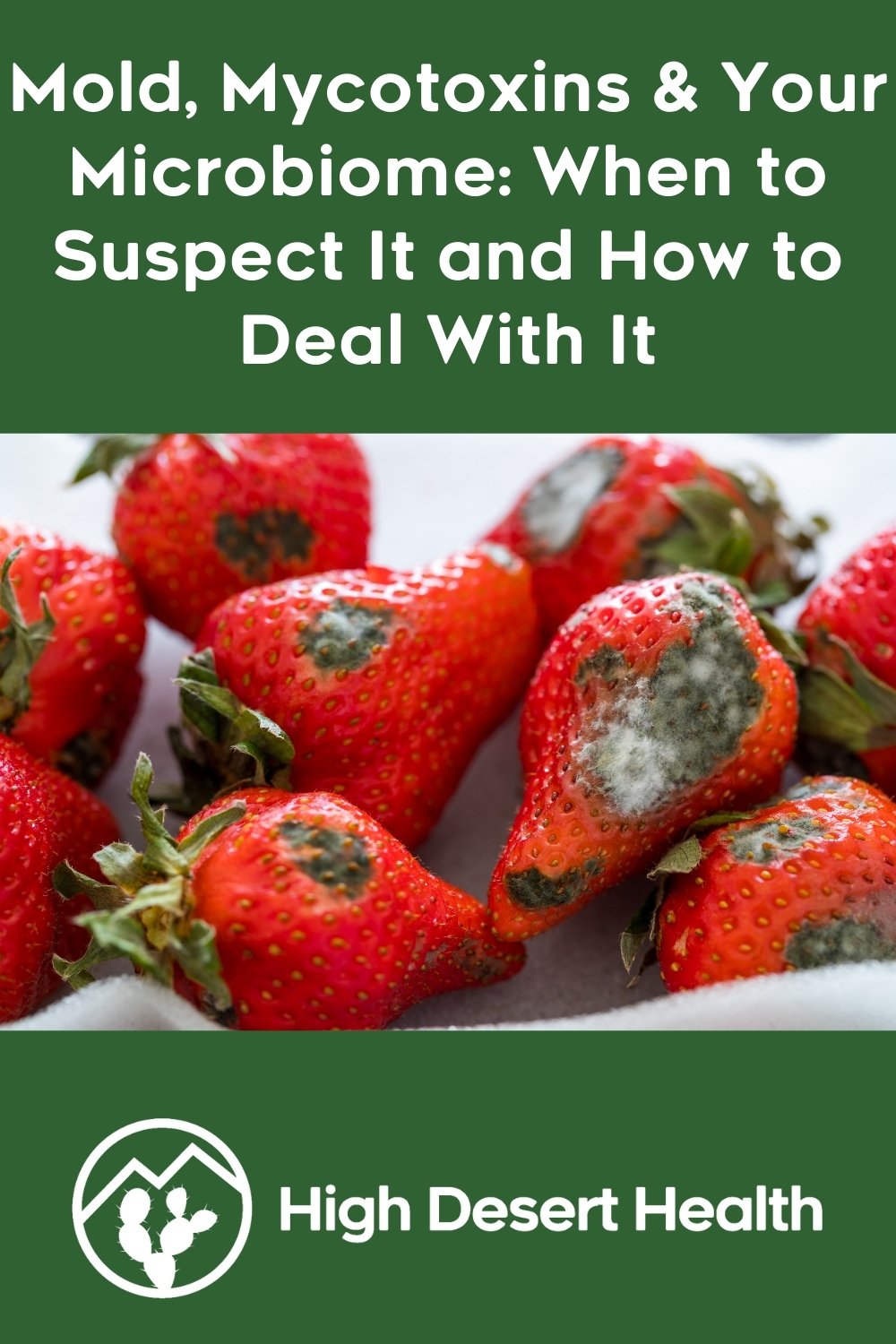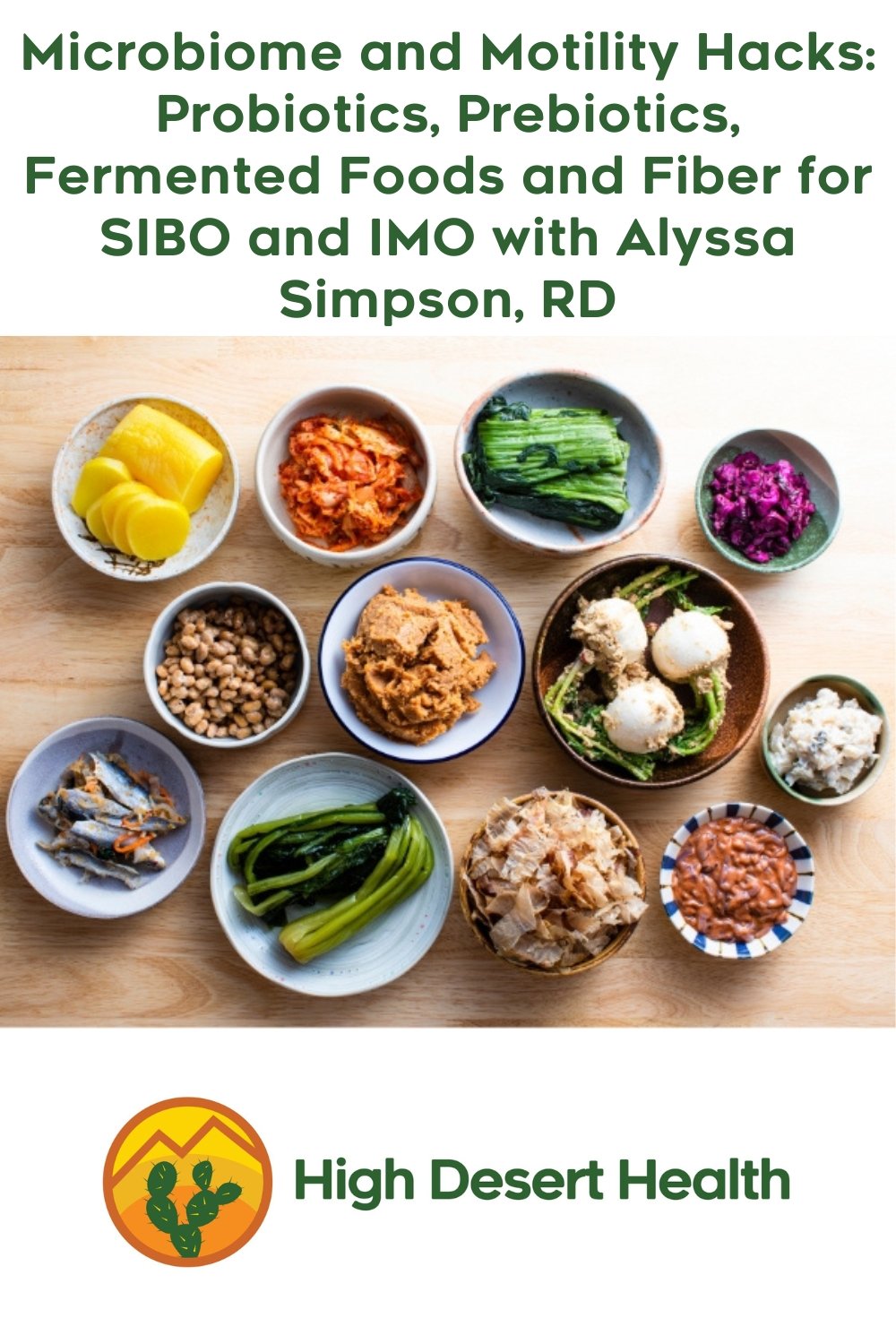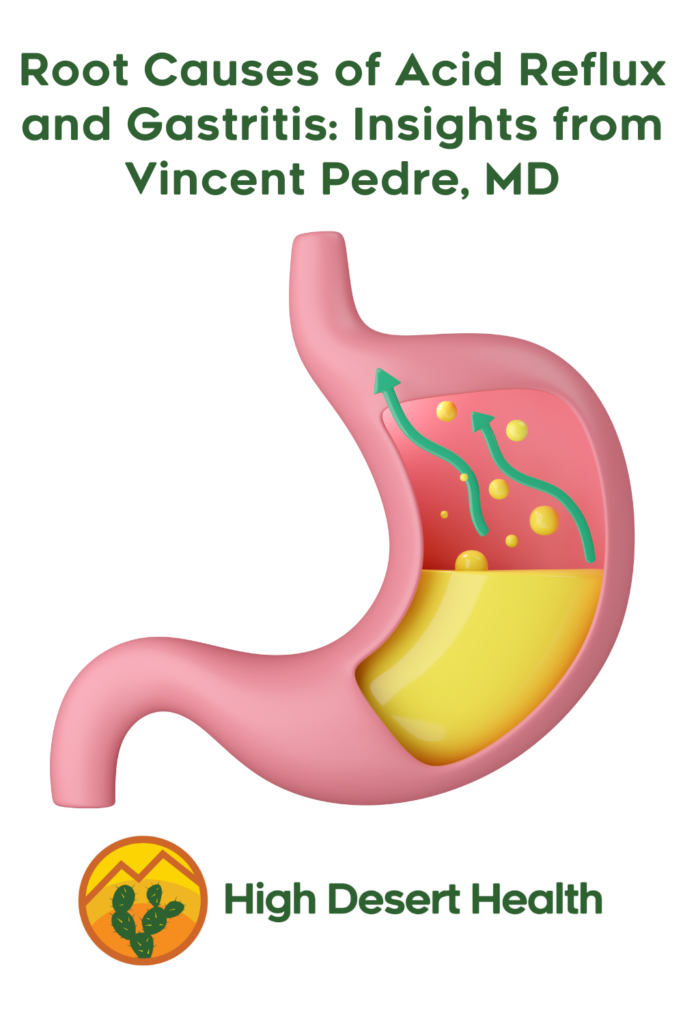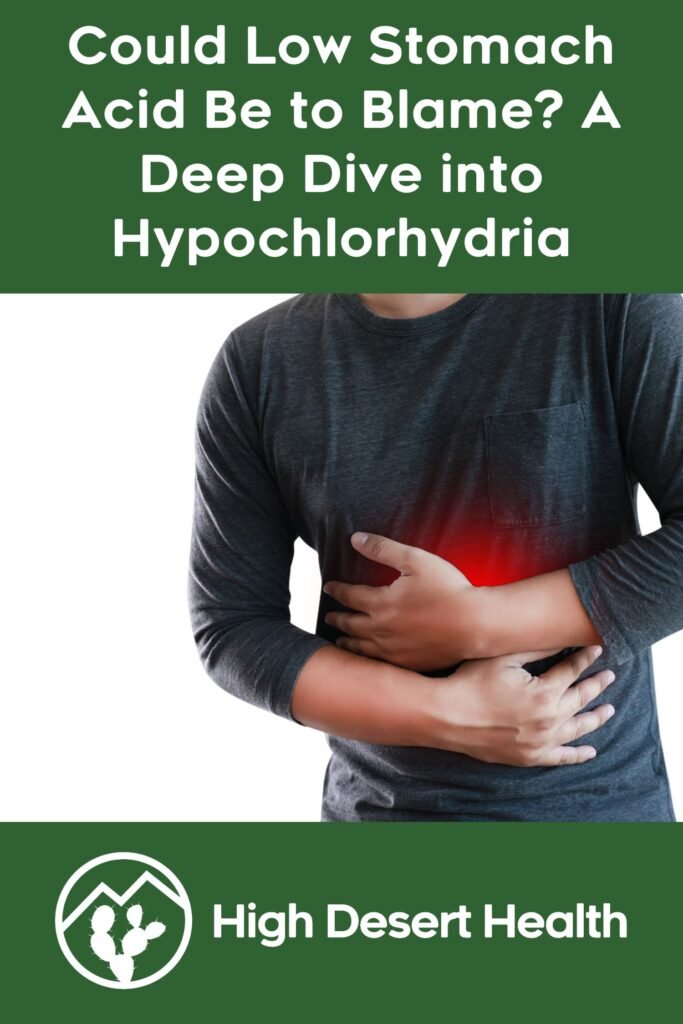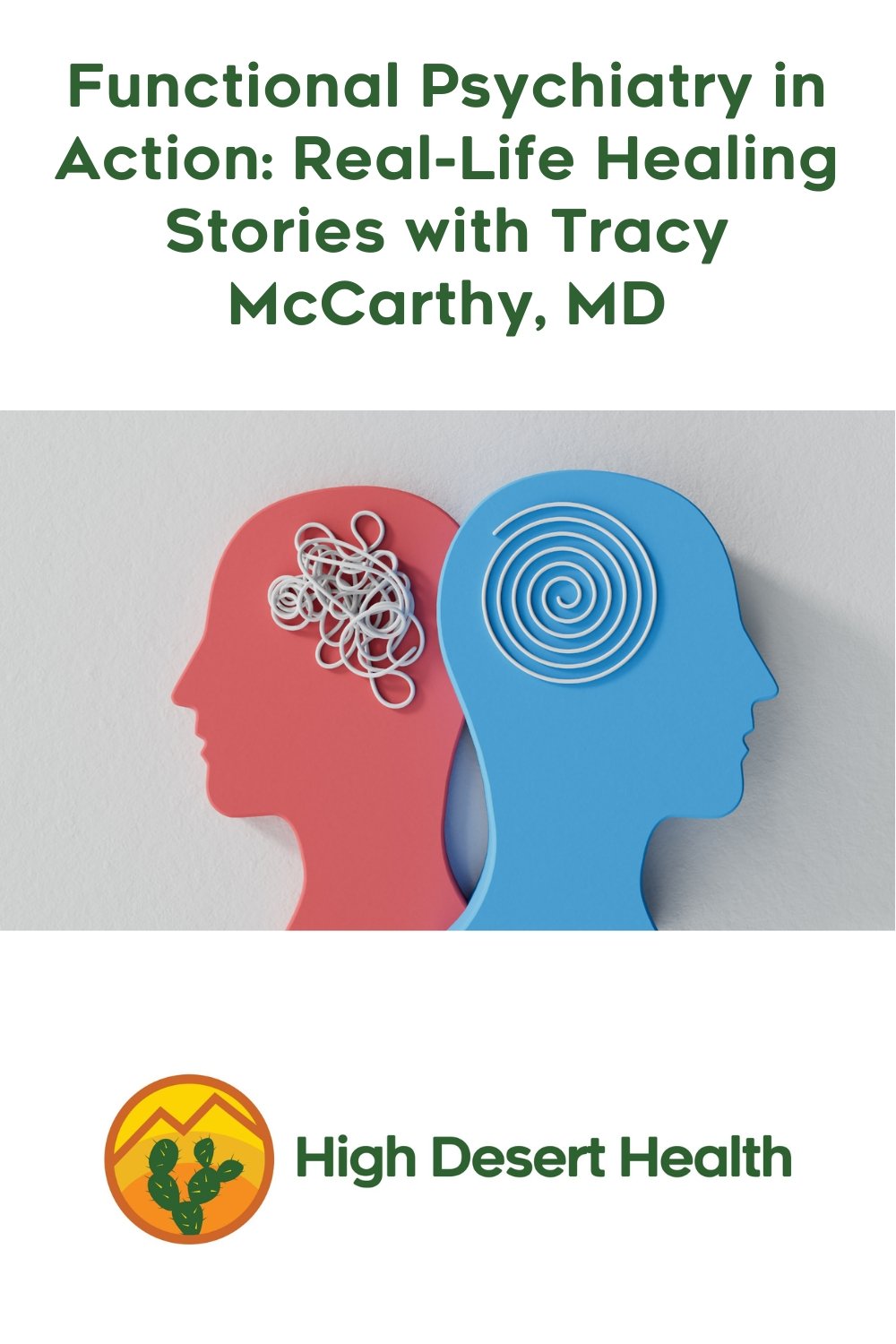
Adapted from episode 142 of The Perfect Stool podcast edited for readability with Dr. Tracy McCarthy, MD, a board-certified psychiatrist and Institute of Functional Medicine certified physician with Lindsey Parsons, EdD.
Lindsey:
So I think you’re the first psychiatrist I’ve had on the show. And I have heard of integrative psychiatrists, but I’ve never talked to one. So I’m curious what the practice of a functional medicine trained psychiatrist looks like, and how you got into functional medicine from psychiatry?
Tracy McCarthy, MD:
Yeah, well, it’s a story. There was a time where I didn’t understand if one could be a functional medicine psychiatrist. So, you know, let me go back and tell you how I got into functional medicine in the first place, and how I ended up in doing what I do now. So, you know, I was a regularly trained allopathic medical doctor. I went into medical school really excited about finding out what goes wrong in the body and how we can fix that and how people heal. And the first few years of medical school were pretty satisfying. That way learning a lot of pathophysiology, and it was really interesting. But then as it went on and my training progressed, things became much more about identifying constellations of symptoms, and labeling that with the diagnosis, and then matching that to a pill. And the asking of why is something is going on became less and less part of it. A lot of that is because people said, We don’t know why, but the pharmaceutically-driven focus, is part of why. I think that question gets pushed to the side too much, because if you look in the research, there often is some hint about why, and there are people doing great research well.
So this was increasingly frustrating to me and my patients, who often were saying, hey, well, why do I have this or do I have to take this pill for the rest of my life? Or maybe medications were helping only part way, or they’re having a lot of side effects, so a lot of scenarios where that wasn’t satisfying. Luckily, around that time that that was happening for me, I came across the research on the role of inflammation on so much chronic illness, and I got really excited, and I got very interested in the role of nutrition and lifestyle in changing that inflammation. I started to make changes in my own life, and was like, wow, I feel like so much better after I eat. I don’t have to unbutton my genes or my energy is staying better, and then as I learned more, I started to hear about these doctors using these approaches and these philosophies and this research called Functional Medicine providers. And I ended up training with the Institute for Functional Medicine and have gone on to do tons of additional trainings in integrative and functional medicine.
But it did confuse me in my early days in functional medicine, because I also hadn’t met any psychiatrists doing this initially, and I kept asking myself, well, will this work in psychiatry? And now I kind of laugh that I thought that. But it was really a result of my training. Our conventional medicine is very siloed. People don’t talk to each other, right? You’ve got your gastroenterologist over here and your cardiologist over there and your neurologist over there, and it’s very separate, as if the body is in these separate zones. We know that’s not really true, and so now I’m at the point, we joke in functional medicine that we know everything causes everything. So it’s like in any one person, a constellation of triggers can show up as a different set of symptoms compared to somebody else, right?
So of course, inflammation can manifest as depression or anxiety, and there’s tons of research to support that. So as a functional medicine psychiatrist, I am focused on finding the root causes of the patient’s symptoms. What are the imbalances in the body? What are the nutrient deficits? What are the microbiome imbalances? What are the toxin exposures like, what’s not working right? And really focusing to address that as well as relieve symptoms. People need urgent help with symptoms often, but then you want to go deeper and ask why, and help them resolve that and empower them to be healthier. And that’s what’s so fun about it. It’s a partnership. They get to really learn what helps them be healthier and and make changes that result in just feeling much better.
Lindsey:
Awesome. So were you practicing as a psychiatrist when you were in allopathic medicine?
Tracy McCarthy, MD:
Yes, I got real interested in functional medicine as a resident psychiatrist. So I was going through my traditional psychiatric residency at that point. And I think I did my first Institute for Functional Medicine training when my second kid was, like, one year old. It was a couple years after residency. By then, I had had an interest for several years in nutrition and had been reading and consuming everything I could on the topic. But that’s when I got serious about it. And, yeah, I was a hospitalist, a hospital-based inpatient psychiatrist, so my focus was working with pretty severely mentally ill, usually involuntarily committed, patients who were experiencing psychosis or mania and really needed stabilization to be able to access basic things like food and shelter, and so that was the focus of my work. But this led me in a really different direction. I would have loved to have been able to help them with these tools, but the system was not set up for that. I could not really change what they were feeding them in the hospital. You know, I would have liked to have done so. I learned pretty early on, as I was training, that I needed to open a practice so that I could actually apply what I was learning and help bring that to my community. And it was the beginning of another journey.
Lindsey:
Awesome. So I’m going to start with the general, which is, how does gut health impact mental health and vice versa?
Tracy McCarthy, MD:
Yeah, oh my gosh, hugely. And I’m sure that we still only know the just the tip of the iceberg on this. You know, there’s so much research coming out all the time about the microbiome and its roles and and when we talk about gut health, we’re talking about several things, right? We’re talking about the microbiome, which I’m sure your listeners know. But just in case, it’s all the bacteria, fungi, viruses, even parasites in our gut, but it’s also our digestion and how well the gut is functioning. In that sense, are we absorbing our food? Are we breaking it down? You know, the gut has a lot of components to it, so it affects mental health in a number of ways, and indeed, overall health, if we are not able to break down and assimilate our food and our nutrients, then we’re definitely operating at a deficit, right? Like neurons need certain things to function well, like B vitamins and magnesium and zinc and cholesterol, all kinds of things. And if we aren’t getting those in the diet, so if we’re not eating them, we’re not going to have them, but we might be eating a great diet, but not actually absorbing it well or breaking it down.
Well, that’s something I see quite a lot on testing I do with patients. And so, you know, the gut is not doing its job there adequately, then your your brain’s going to suffer. It’s not going to have what it needs to work right. You won’t have the hormones you need, or you won’t have the amino acids you need for neurotransmitter production. So that’s one way you see it impacts. But the microbiome is the biggie here. You know the bacteria that we acquire through vaginal birth and then through breastfeeding, and then as we grow with time, we are acquiring this very diverse microbiome. Ideally, it’s doing so many jobs for us and these bacteria make a number of compounds, and many of these are signalers to our own immune system and to our nervous system.
Some of the things they create are actually neurotransmitters like GABA. GABA is a relaxing, calming neurotransmitter. The right bacteria could be producing this for your benefit, they make cytokines, which are inflammatory messengers, and some of these are going to turn up inflammation in the body, and other ones are going to turn it down. So the level of that’s going to be important. They can be producing toxins, like endotoxins, like something called lipopolysaccharide, which, if that’s getting through a leaky gut into the bloodstream is going to be extremely – it’s like putting lighter fluid on things. It’s going to be very incendiary and light up your immune system. So they communicate a lot with our whole body through the production of different compounds. These can be absorbed across the lining of the gut into the bloodstream, and fascinatingly, these compounds can also travel up the vagus nerve to the brain.
This part always just blows my mind, that there’s this chemotaxis, they call it, where the chemical is actually traveling up a nerve. So you know, there’s multiple ways in which the microbiome is impacting our body. And that our gut in general, is impacting our body and our brain is not in a special glass case, immune to what’s going on, right? I mean, yes, we have a blood brain barrier, but many, many things get it through that, and the gut has a massive impact on it, which is why they call it that gut-brain axis. It’s a it’s a two way street. It’s communication between the gut and the brain.
Lindsey:
Yeah, so I’m pretty sure you addressed very much what goes from the gut to the brain? What about from the brain to the gut?
Tracy McCarthy, MD:
Yeah, great question. So that vagus nerve that I mentioned, where the chemicals can be traveling up it, this is the primary way the brain communicates with the gut. It’s a cranial nerve, which means it comes out of our cranium, out of our head, from the brain stem, and it innervates our entire thorax, you know, our chest and our abdomen. So all of our organs are innervated by the vagus nerve. So it’s in charge of hormone production in your endocrine glands. It’s in charge of slowing heart rate and slowing breathing. And most importantly to this discussion, it’s in charge of digestion and gut motility, meaning moving things along at the proper rate in the gut, and the gut squeezing correctly at the right time. That’s very important. And so that vagus nerve is not on line. And I’m afraid in lots of people with serious stress and trauma, that vagus nerve has been really impacted in the tone. We say the vagus nerve is not good, then you’re operating at a deficit. You don’t have that great brain input that’s needed for optimal functioning of those organs.
Lindsey:
Okay, so I’ve been trained on the Organic Acids Test and how it can show issues like deficiencies of serotonin, which is known to be one of our feel good neurotransmitters, and the idea behind SSRIs, or selective serotonin reuptake inhibitors, which keep more serotonin in the brain. But lately, I’ve been hearing on my functional medicine podcasts that anxiety is not a serotonin deficiency. So my question is, is anxiety ever a serotonin deficiency, or is it for certain people?
Tracy McCarthy, MD:
That’s a great question. I think anxiety is something that’s very heterogeneous, and there’s a lot of reasons that people have it. And I don’t tend to focus on neurotransmitter imbalances as a root cause, because I feel like first of all, that theory about SSRIs has really been debunked, that we have a chemical imbalance, and that’s what they fix. When people respond to an SSRI, we see that certain inflammatory cytokines have been reduced. So there’s something happening with inflammation getting reduced in people who are responding. But the other reason I don’t tend to focus on that is because that’s not really the root cause. Even if you’re having too much serotonin or not enough, or too much dopamine or not enough, why is that imbalance occurring in the brain? What is the trigger for that? Is it lack of raw materials, like not enough amino acid precursors for making those neurotransmitters. Is it inflammation, affecting the regulation of these, is it microglial activation, which is like an immune response in the brain? So that’s how I tend to focus. So I’d say probably it could be anything, really, because it’s people. It’s going to be different in different people, right?
Lindsey:
So if somebody does show up with, say, a tryptophan deficiency, is that something then you would supplement?
Tracy McCarthy, MD:
if it was very clear that that was a deficiency, sure, I do tend to look more globally like I will tend to see, hey, you aren’t really, all of your precursor . . . Well, I would say on an organic acids test, you’re looking at metabolites in the urine, right? So I would say, if I see low neurotransmitter metabolites across the board, I feel like there’s a problem with protein breakdown and digestion, right? That’s where I tend to focus is on that breakdown in digestion, obviously ensuring they are also getting enough protein in the diet. And I might encourage them to use something like collagen peptides as an easy way to augment that. Or sometimes we use amino acids as well. It depends.
Lindsey:
So getting back to that whole root cause question, then, so what root causes do you find are common with anxiety?
Tracy McCarthy, MD:
You know, one of the number one things I find is blood sugar. That’s a really big issue. So many people are running around with blood sugar swinging up and down. They have no idea they’re riding the blood sugar roller coaster I call it. This is a real common problem in our society where we have a lot of insulin resistance, and people can have levels of insulin resistance that aren’t obvious enough to show up when they get testing, like hemoglobin A1C or their fasting insulin. And if that’s all anybody’s looking at, then you won’t see sometimes the whole story.
So I’m a big fan of doing continuous glucose monitoring in my patient and actually trying to help them see what happens after a meal. You know, you might get a huge spike in blood sugar after a certain meal, and then half hour later, that blood sugar’s plummeting. Guess what happens when it plummets? You release adrenaline because you have to rescue a low blood sugar then, and that feels terrible. That’s anxiety producing. It’s when people get tired often after a meal, then they can get shaky. And it’s also a reason that a lot of people wake up at night. It’s a common trigger for insomnia, and I’ve really seen that in working with my patients. I say, look at that glucose monitor in the morning, and watch what happened overnight. Like, take a note of when you woke up. Oh, I woke up at two. And then you look and you’re like, Oh, your blood glucose spiked at 1:30 and then it dropped. And then that drop is what woke you up when the adrenaline was released. So that’s a big one.
And you know, there’s such simple steps you can take to fix that. It’s wonderful when you can help somebody shift that, because suddenly they’re feeling so much calmer, like getting them eating protein with each of their meals, making sure they’re digesting that, if that’s the issue, making sure there’s adequate fats, and then just really adjusting the carbohydrates for that person individually, like, how much can they tolerate, making sure that those glucose spikes aren’t going too high after a meal? You know, there’s other tools we can use to, like resistant starch and there’s blood sugar sensitizing supplements, but really it’s mainly about the food, and then also stress will do the same thing.
Stress can cause the blood sugar to spike and drop. So just that awareness really helps people make different choices. I’ve definitely seen people where they say, you know, my gosh, as soon as I cut the sugar out, my anxiety completely flattened. And this is a person I’m thinking of had had decades of anxiety treatment and a very intensive anxiety center she’d gone to multiple times, and it was the sugar. It was so simple for her. It’s not always that simple, but sometimes it is.
Lindsey:
Any other root causes that come to mind, beyond the sugar?
Tracy McCarthy, MD:
I mean, a lot of things, toxins. Mold is a huge source of toxin that I see. I wish I could say that’s rare, but it’s really common. Lots and lots of buildings have some kind of water damage, mostly unbeknownst to people. And these mycotoxins or mold toxins can accumulate in the body, and they dysregulate nervous system functioning, immune functioning. They just dysregulate your detoxification pathways. And so as they accumulate, they start showing up as a lot of weird symptoms, and absolutely, anxiety is one of those. It’s a real common one.
Lindsey:
Yeah. Okay, so this applies both to anxiety and depression, but how can you tease apart the physical causes of mood disorders like anxiety and depression versus the circumstances of a person’s life that are setting them off, like when I had some serious health concerns and no primary care physician. I was in a new location. I started having panic attacks at night, but as soon as my concerns were allayed, then those panic attacks went away.
Tracy McCarthy, MD:
So, yeah, I never want to downplay the role of the psychological factors. They’re enormous, and these really aren’t separate, right? Like when we have stressors, these are mediated through hormones in our body. They’re even mediated through what happens in the gut. Our gut changes, our microbiome changes when we have stress. So these are huge factors. We all can think of situations where someone had the depression that was really situational, it was very clear what the trigger was. So those are always important to look at. But I think the other thing to think about is like, Hey, are you doing the things to address that and you aren’t getting better? That’s my mission, really, is to help people understand the overlooked physical causes, because they may be going to the doctor.
I think really common scenario is they’re going to the doctor about their depression and anxiety. They’re given a medication, and they’re hopefully encouraged to get therapy. Hopefully they do that. You know, all of us benefit from therapy, but are they still stuck. Or do they want to be on the pill? Maybe they’ve done a lot of therapy, but guess what? Therapy is not going to fix their B12 deficiency. So it’s like, if you’re making certain progress, but you’re plateauing, or you want to look at all the areas at the same time, okay, I’m going to address these stressors, because I do know they’re important, but what else can I do to support my system? Because the thing is, if we have these physical issues going on, we’re more vulnerable to the psychological stressors. You know, we’re less resilient. I mean, we can be much more irritable when we have the wrong microbiome, and then everything’s harder. So they interact a lot.
Lindsey:
Yeah. So how can you help somebody who has debilitating anxiety or depression that has a legitimate and ongoing cause, like a serious health issue, for example?
Tracy McCarthy, MD:
Well, I think you’ve got to meet them where they are first of all, and then you look for the lowest-hanging fruit, and are they getting the support they need for that health issue? I mean, a lot of times, really, one of my most important roles is seeing someone and validating what they’re actually going through. And sometimes they’re not even having that happen with their serious health condition. So that’s the beginning part of healing, right? There is like acknowledging this is really happening. I’m not going to gaslight you, you know, I see this. What are we doing to do to help build your resilience? And there’s so many great tools out there that we use just for the mindset part of this, and for the nervous system calming and so helping them up their resilience and their resources, and at the same time beginning the process of the appropriate place to start testing what are the pieces that are missing?
And here’s the thing, when you’re talking about some of them going through a significant health crisis, the things that are driving their depression may be the same physical causes driving the other health issue, or is overlapping. That is very common. You know, I work with lots of patients where maybe they’re coming in for the depression or the anxiety, but when we work on the underlying issues, now their energy is better, their hormones are more balanced. You know, their periods don’t hurt in the same way, their gut is feeling better. These are all connected. So it to me, it’s always about the holistic view and looking at the whole person and seeing where are the gaps that we can intervene on most easily first, and go from there.
Lindsey:
Okay, so what would you say are the underlying causes of depression that you see most commonly?
Tracy McCarthy, MD:
Well, I think inflammation is huge here, and some of that is real nutrient deficiency. Deficiency is one piece of that. The most common nutrient deficiencies I see that trigger depression are lack of certain B vitamins. I mentioned vitamin B12. That’s a really important one, because people are much less able to absorb B12 with age because of issues with their stomach and producing something called intrinsic factor that’s required for absorbing B12. But also, lot of medications deplete B12. So here’s a really common one, Metformin. That’s a great medication for diabetes. Lots of people are on that for their glucose. Has some longevity benefits, but it depletes B12. So you’ve got to take B12 if you’re on it. And I’ve had patients absolutely like, I’ve worked on my blood sugar, I’ve been doing so much better. But then the last two months, I’m so super depressed. You know, this is when I’m meeting them and I find out what they’re taking. I’m like, did anyone ever tell you to take B12 with your Metformin? Well, no. And you know, two weeks later, they’re feeling a whole lot better with that B12. But it’s not just B12. It can be B6 it can be folate, which is another B vitamin. These are big players.
And then, besides the B vitamins, minerals are really important, magnesium, zinc, plays a major role here, and also omega 3 fatty acids, they’re really critical. And this comes back to that theme of inflammation. I know I sound like I’m repeating myself when I talk about inflammation, but it’s such a common issue here that, you know omega 6 fats, they’re everywhere. We don’t have any problem getting enough of those. We need both types, right? But Omega 6s are everywhere. They’re ubiquitous because they’re in every seed oil, canola oil, corn oil . . .
Lindsey:
. . . every restaurant meal, every take out meal, every chip, except for the three that have avocado oil,
Tracy McCarthy, MD:
Yeah, you just cannot . . . it’s very easy to find them, and most people are overburdened with them. And I always describe it to people as like your immune system is like a car, and the omega 6 fats are like the gas pedal, and the omega 3 fats are like the brakes. And you need both, right? If you say you’ve sprained your ankle, you need to mount a response with inflammation, and then you need it to go away when it’s healed. So you need to turn it on and turn it off. But most Americans are driving around in a car with like, pedal to the metal, and they don’t have any brakes at all because they don’t have any omega 3, because they’re not eating the fish that contain those. And that’s really the main source for that, and so that’s what we’re working to balance. So if you can really increase your omega 3s and work to reduce the omega 6, that’s the part a lot of people forget about, right? They might take fish oil, and usually not enough, I would say, but they’ll take it, and they don’t realize they need to work on those processed foods that you’re talking about and really eliminate those. And at least at home, choose the fats that don’t have those to cook with to control it right there. Boy, people feel a lot better when you get that oil change done. You know, switching that really is going to lower inflammation.
Lindsey:
An oil change, I like that. Think about the car. So do you have any stories of past patients with anxiety or depression who got better that you could share?
Tracy McCarthy, MD:
Oh, yeah, I think of one of my early patients was a real dramatic case and a cool functional medicine case, because there were several pieces. But this is a lovely lady who came to me with anxiety, and she actually had panic attacks, and she also had irritable bowel syndrome with diarrhea, and she had been someone who loved to travel, and because of her panic attacks and because of the irritable bowel syndrome, she never knew when she was going to need a bathroom. That combination just ended her travel, and it really bothered her, and she was on, I think it was Lexapro, which is a common antidepressant, anti-anxiety medication, and she’d stayed on it because it had kind of helped, but not enough. She still obviously had a lot of symptoms. So she came to me about this, and we found a number of things. We found that she had an overgrowth of yeast in her gut. We found that when I looked at her timeline, which we take in functional medicine, we go back and say, like, hey, when did these symptoms start? When were big events in your life? When did you have all these? When was surgery? When did your parents get divorced? Whatever these things were, we map it out so we can see the connections. And it became really clear that her anxiety had started like a year or so after she’d had her gallbladder removed, and so she had followed the standard recommendations of a low fat diet after removing the gallbladder.
But what this meant was she began to really lose out on fat-soluble vitamins like vitamin D and K2 and this had a big impact on her functioning. Vitamin D is huge for mood. And this also really shifted her microbiome, because now we’re not having the same foods coming down the pipe, and she had that overgrowth of yeast. We treated that overgrowth. We worked on the digestion. We supported the digestion of fats. We kind of made up for that missing gallbladder. We were able to get fats back in the diet, which she definitely needed for her neurons to work right. There were a few other changes I’m forgetting right now, but those were the big ones. And really, within a couple months, her anxiety was totally gone, her panic attacks were gone, and her diarrhea had resolved. And then she was telling me she was flying with her grandson, taking trips, and it was like her life was back, and that was it. She knew what to do to stay healthy after that.
Lindsey:
Awesome, cool story. So are there particular tests you like to use to diagnose the things going wrong, digestively, or the yeast?
Tracy McCarthy, MD:
Yeah. So there’s so many tests out there, but the panel I like to begin with, with patients is I do a very comprehensive blood test that looks at inflammatory markers and some nutritional markers and blood sugar and hormones, zinc, copper, things like that. And then I use an organic acids test, like you mentioned. I like that a lot, in particular for the yeast or for molds. It does a good job of telling us about colonized fungal species much better than a stool test does. And I like also that the organic acid test tells me about mitochondrial function and some of the detoxification pathways. That’s helpful. And then I do do a comprehensive stool test, which is always interesting to see people’s results, where you really can see if there’s digestive impairment, you see the imbalances in bacteria, sometimes you find some interesting parasites.
Just today, I saw a tapeworm from a dog in a patient. So she wasn’t too happy to see that. That’s rare, but these things do show up, and we can treat them. It’s helpful to find out what’s triggering the inflammation, because there were inflammatory markers on that test because she was having this pathogen. So that’s where I start. Sometimes it makes sense to go further down certain pathways, like like evaluating mold toxins, for example, or other environmental toxins, or to look at metabolism of hormones with something like a Dutch test. And sometimes it makes sense to do some additional genetic testing.
Lindsey:
Whose stool test do you like?
Tracy McCarthy, MD:
I have used them all, I will say, and they’re all pretty similar. I really have used most recently, for a long time, I was using Genova’s GI Effects, and they were taking so long to get the test back that I ended up switching to the Gut Zoomer from Vibrant America, which does have a bit more pathogens on it. And I like that. I used to use GI Map in the past. Didn’t like the way they reported calprotectin, though that wasn’t standard. So, and the Doctor’s Data 360 is very good as well. I mean, you can get good information from all four of those tests.
Lindsey:
Yeah, I actually started using the US Biotek GI Advanced Profile, because it’s got everything that’s on the GI Map, everything that’s on the GI Effects. And it’s sort of in between price wise.
Tracy McCarthy, MD:
That’s good if it’s an in between price wise, yeah, yeah.
Lindsey:
And I’ve started using the Tiny Health PRO, because they do a full metagenomic sequencing, plus then they have all the digestive health markers. So it’s kind of like the best of all worlds. And again, it’s very reasonably priced.
Tracy McCarthy, MD:
I like that it’s reasonably priced,
Lindsey:
Yeah, yeah. And you can get it on Rupa. And whose organic acids test do you like?
Tracy McCarthy, MD:
Oh, well, the I use Mosaic, which was Great Plains.
Lindsey:
Yeah. Okay, what portion of anxiety and depression do you think is genetic?
Tracy McCarthy, MD:
Oh, I love this question, because I think a lot of people feel like they’re doomed because of their genes. And I beg to differ on that. I think we all have our predispositions, the things that we’re most likely to get, like, you know, we say, okay, my family might really tend to get diabetes or autoimmune disease or depression, but these things are epigenetic. There are things turning these genes on and off. And so your genes are not your destiny. You hear different numbers, like, oh, genes are like, 10% of the puzzle. I don’t know. You know, in any one person, it could be different. I’ve also heard a sort of morbid amount analogy, like, the genes load the gun, but the environment pulls the trigger. It’s a little violent. I don’t like that, but it is, I think, putting it in perspective that it is just one piece, and that we should not feel like we have to settle because of our genes and in fact, there’s so much we can do to influence the expression of those genes.
Lindsey:
So I see a lot of people, and obviously a lot of kids are diagnosed with ADHD these days. Are there root causes that you see for that?
Tracy McCarthy, MD:
Oh, yeah, that’s a really interesting one and complex to me. I think there’s some really good research to suggest that there’s a zinc and copper imbalance occurring there. That if you’re interested in knowing more about that, I would look into the Walsh Research Institute. They have a huge database, and then a lot of research on that, and I had a lot of success with correcting that zinc copper ratio and helping ADHD patients.
Lindsey:
Dominant in which one?
Tracy McCarthy, MD:
They tend to be low in zinc with high copper. And there’s evidence also about metals playing a role. And there are some ADHD patients where it looks like dairy intolerance is part of the problem. I think it’s another heterogeneous group, you know, that I think we have these common end points of a label, but people arrive there differently. You know, different things to look at, but there are common themes.
Lindsey:
The podcast that published today was with someone who looks at genetics and just helps people figure out how their genetics might be playing into their health issues. I had her look at mine because she had a unique set of skills that I was interested in. And she asked me, based on my genetics, do you have trouble focusing? And I’m like, No, I can focus. Well, you know, I get my work done. I’ve done well in school and all that. And then my husband was like, Are you kidding me? You’re like, “squirrel, squirrel, squirrel.”
Tracy McCarthy, MD:
Don’t you love it when the spouse is like, what? I know, I’ve had that moment before, too.
Lindsey:
I am a little easily distracted, so she suggested I take dopa macuna, which I’ve been playing with. Is that something you use?
Tracy McCarthy, MD:
I have not that exact product. No, how are you liking it?
Lindsey:
Maybe I’m focusing better, but it was one of these things where it didn’t feel like a disability of sorts.
Tracy McCarthy, MD:
Yeah, well, that’s the question too, right? About, like, neuro divergence and neuro tribes? Like, there are a lot of questions there, too. Like I think about kids with ADHD, and sometimes I feel like this is trying to put a square peg in a round hole in our school system.
Lindsey:
And they’re creative and they have different. . .
Tracy McCarthy, MD:
Right, exactly, and you don’t want to squash that, but if somebody is really having neuroinflammation, then you want to support them with that, right? So, I think it’s right. First thing, I think it’s really heterogeneous.
Lindsey:
Yeah, yeah. I think that it’s possible I’m concentrating better. And it’s one of these things where if I’m talking about something, and then something else comes up, I will not know where I was, like I will need somebody else to bring me back to the original topic. Or go on to tangents when I’m telling a story. So I think it’s something I could use a little help in. So if it helps, we’ll see. We’ll see. But anyway, yeah, just tobring up my dopamine. Do you use any things like amino acid precursors to bring up dopamine? Or is that, again, not root cause enough for you?
Tracy McCarthy, MD:
It’s not my focus. Like I do tend to go deeper because, again, I’m like, Well, why are you low in that? Like, what’s the thing? But I mean, if somebody truly, like genetically runs that way, that they’re always going to be low. I mean that zinc copper situation is kind of like that, where sometimes genetically, they will really just need higher levels of zinc supplementation, you know, or people really need higher levels of methylfolate, for example. So there is a place for that, for sure, but I don’t want to miss the underlying drivers of the imbalances, you know, which is usually some kind of toxin, infection, combination, trauma. It’s all part of it.
Lindsey:
Yeah, yeah, I always ran low on organic acids. I think I’ve done two tests, and both times, my dopamine was low, but I never again felt like there was any – my serotonin was low too – I never felt there was any issues with me.
Tracy McCarthy, MD:
Yeah, and it’s complicated with the urinary organic acid test, you’re looking at metabolites in the urine, right? They are not telling you the brain concentration right? We are having to infer, you know. And it can give you some ideas of things to try and then see, but then you really have to see clinically. How did it go?
Lindsey:
So I’ve heard some functional medicine doctors talk about certain root causes of schizophrenia that may be treatable. And I’m curious whether you’ve found that there are some typical root causes for schizophrenia, or if you’ve had any patients who’ve recovered to any extent.
Tracy McCarthy, MD:
Great question. And I’m excited that more people are talking about that. Some of the most interesting work has been done on Zonulin. You’re probably aware of Zonulin, it’s a leaky gut marker, and the work by Alessio Fasano on this. A pediatrician who’s done a bunch of the research on this, we think about celiac on his research, but then a lot of the research was also done on schizophrenia. And no one ever talks about that. And I’m always thinking, Okay, this is an autoimmune disease. Why don’t we treat it as such, you know? Why don’t we look at that? And what’s interesting is, if you look at some of the original work from Dr. Abram Hoffer, before we had Haldol and these medications, the anti-psychotics, they would do different kinds of fasting treatments or elimination diets, and people would clear. So there was some trigger in those cases, dietary trigger, that was playing a role. So, I’ve always been very interested in that, and now we’re seeing some emerging research about the role of mitochondria. And the ketogenic diet being impactful, not just for bipolar, where I’ve long expected to see it, and that’s because, hey, ketogenic diet works for seizures.
The medications for bipolar are anticonvulsants, just like for seizures, they raise ketones. Like, why wouldn’t that work? Well, those studies are coming out now, and it’s really exciting. But this same approach is working in schizophrenia in these studies, and it’s really about brains that are unable to utilize glucose properly, and getting them a fuel source that they can utilize. And it’s another example of how a common trigger will express differently in different people, different symptoms. The patient who has schizoaffective disorder, so essentially, both bipolar and schizophrenia, and gluten is a major trigger for her. She gets much more psychotic if she has gluten, it also triggers projectile vomiting in her. She has numerous reactions to it, so her learning that has been really, really helpful in starting to control symptoms. Those are some of the my thoughts about that.
Lindsey:
Okay, and anything else to say about bipolar and root causes?
Tracy McCarthy, MD:
Well, I do think this brain insulin resistance is a big one that we’re going to see more and more about. But then there’s some other cases where it’s really, like infectious like Lyme can cause mania, and people are not realizing it’s that. Or NMDA encephalitis; there’s other causes that can manifest as mania. There is encephalitis that can do that too. But here what the thing I think is kind of funny, is we’re like, Oh, these are the exceptions. I don’t really believe that, because there’s always a reason somebody’s having this. It’s not like there’s just run of the mill bipolar, and then there’s these special ones that have a cause. They all have a cause. We just haven’t figured it out, you know?
Lindsey:
Yeah, right. In other words, bipolar is not a thing. A bunch of underlying stuff creates the symptoms that we call bipolar.
Tracy McCarthy, MD:
Yes, exactly. They have that symptom cluster, they have that mania, they have the depression and this cycling. But what’s causing that brain malfunction basically.
Lindsey:
Yeah. So how do hormones play into mental health issues?
Tracy McCarthy, MD:
Hugely, is what I would say. I see that every day. I mean just looking at menstruating women in the degree of like premenstrual symptoms, whether it’s PMS or it’s PMDD, which is premenstrual dysphoric disorder, which is a more official psychiatric diagnosis where you really have extreme, much more strong mood symptoms or irritability in the week or so leading up to your period, I see a lot of that. It’s related to estrogen dominance. So too much estrogen, not enough progesterone or both. There’s lots of reasons for that. The gut comes into play here again, where the gut is impacting metabolism of estrogen, and so estrogen isn’t getting taken out of the body properly, and it gets recycled, and you get high levels, also xenoestrogens from plastics. You know, parabens and phthalates, these toxins are contributing to the estrogen burden, and then we deplete our progesterone through high stress, not enough sleep. And so imbalance is just really common, and it shows up for a lot of women.
That’s just one example, but I see it a lot. PCOS is another hormonal imbalance in women, polycystic ovarian syndrome, where they tend to have high androgens and irregular cycles. A lot of problems with hormone levels there. But you know, when we’re talking hormones, we’re not just talking sex hormones, right? We’re not just talking estrogen and progesterone. Also, testosterone is one of the sex hormones, and low testosterone absolutely will cause depression in a man. But we’re also talking about thyroid and cortisol and insulin. All of these hormones are key and are part of the picture, and they interact. And DHEA, there’s another one, you know, that’s a precursor for testosterone and made in the adrenal gland along with cortisol, and affects immune function so much. So it’s about for me looking at that full picture. And in my training with functional medicine, you really work on the cortisol and the insulin first, before you do much with sex hormones That said, I’m a big fan of hormone replacement therapy and menopause, I think is a game changer for women. A disservice was done to them with the Women’s Health Initiative study. When everyone stopped their hormones, I just see how they are, how much better people feel.
Lindsey:
I heard a podcast recently where they were talking about not just hormone replacement therapy, like the estrogen patch that your OB/GYN is going to give you, but like, going beyond that, like supplementing estrogen to the point where you’re back where you were when you were menstruating.
Tracy McCarthy, MD:
That is a great question. I think there’s a lot of research that really needs to be done here, but I don’t know if it’s all going to get done. The hormone research is rife with issues like for example, you look at a study on progesterone, and a lot of it will actually include progestins, which are synthetic and not progesterone, and with estrogens, you run into this problem. That study may include oral progesterones And not just transdermal. Like I feel strongly transdermal is much, much safer and better than oral, or that will include Premarin, which is the horses estrogen, not human estrogen. So these are complicated, and with the current practices in what I see is a woman may come to me on HRT (hormone replacement therapy) that was sort of titrated to her symptoms. So she was doing menopause, she was having hot flashes, and symptoms, and she was given a patch, and they arrived at a dose that felt good, and that’s where she’s at. No one ever checks a level. That’s not what they do in OB/GYN practice, but I always do check the level, and so I’ll see them be at like, 34-40, I feel like, that’s the common number I see when people are kind of like, I feel better. But if you look at the functional medicine research going on with reversing cognitive decline, they’re using much higher numbers of estrogen for those people who need that, what we call trophic support, or that growth support for hormones from estrogen.
Lindsey:
Yeah, what should people be shooting for?
Tracy McCarthy, MD:
Well I don’t think we can say what any one person should shoot for, so I don’t want to say that, but I will say that, like in these studies, they’re often somewhere between 50 and 80, for example. Obviously it’s got to be right for that person and be balanced out by the progesterone and not be causing symptoms. But I think there’s a lot of room for study here. I think these are very important compounds, and they have huge impacts. Progesterone’s a potent neurosteroid; we don’t treat it that way. It’s really awesome what it can do. So I think it’s an area that I hope we’ll see more and more research done, and I am happy to see the sort of grassroots resurgence of people saying, I want my hormone replacement. And there’s some good people in the forefront advocating for that. There’s some great OBs out there writing about it. So hopefully we’re going to see people’s brains and bones and bodies protected a lot more now.
Lindsey:
Yeah, it’s sort of a funny issue, because in every way with functional medicine, we’re talking about restoring what would be our natural health if we didn’t have such terrible food and environment, et cetera, et cetera. But in this one area, it’s not really natural that after somebody goes through menopause, that you then put them back on hormones, but at the same time, it’s going to probably keep them alive longer and healthier longer.
Tracy McCarthy, MD:
So yeah, you’re so right. And I have two thoughts about that. One is really, in functional medicine, we look at everything is just a tool. So is it a good tool or a bad tool, like the shades of gray. I’m certainly not anti medication, right? There’s some medications that are wonderful tools. For example, low dose naltrexone, right? But other medications are really terrible. These are tools, and we can be agnostic about them. I am not trying to recreate the Paleolithic era here. We don’t live in that time, and that’s not what we need to do. However, I did go into functional medicine, my introduction to it really was from the ancestral health movement. I was like, Well, what’s natural? That was my paradigm, because it made sense to me. And so I was like, why would you keep taking hormones later? But then, as I trained with people, and I learned, and then I saw the impact, I could not help but have my mind vastly changed. I cannot tell you how helpful hormones can be for patients, like game changing, for their brains and their functioning. To me, it’s like, if this can be done safely, and well, this is protecting people’s cognition and their bones, and the benefits are usually outweighing the risks. Obviously, everybody’s an individual, and that has to be worked on with their own doctor. But yeah, that’s where I’ve come to.
Lindsey:
Yeah. So I understand you have a freebie for my listeners. Do you want to tell them about that?
Tracy McCarthy, MD:
Yeah. Like I said, my goal is for people to be aware that there’s these overlooked causes of depression and anxiety because no one talks about them. You go to your doctor and you’re told to take a pill and maybe get therapy and a discussion. And I want people to be empowered to know what else to look for. So this is my free guide about Top 10 overlooked causes of depression and anxiety.
Lindsey:
Yeah, wonderful.
Tracy McCarthy, MD:
And that’s just the place to get you thinking, Where might I be having a gap that I can start working on, and it’s just a really good place to start.
Lindsey:
Okay, and then so your website is DrTracyMccarthy.com.
Tracy McCarthy, MD:
Yes.
Lindsey:
Any final thoughts before we close?
Tracy McCarthy, MD:
Just it’s been a pleasure to talk with you and to geek out on these favorite topics of ours here.
Lindsey:
Indeed!
Tracy McCarthy, MD:
They are worth people knowing about that. You know, I think you are like me, where it’s like people can be empowered and make so much change in their life when they have more knowledge and I just feel like people deserve to know what’s up.
Lindsey:
Yeah, I’ve had friends with the debilitating anxiety, and I really wish they would have followed the functional medicine route, and maybe they did to some extent, I don’t know. Because you have people saying, well, I did everything, I tried everything. And you’re like, did you try everything in the allopathic medical system? Or did you really try everything?
Tracy McCarthy, MD:
Yeah, because if you tried everything outside of it, it is an amazing long list. We didn’t talk about a ton of different modalities, you know, is from tapping to psychedelics to, I mean, there’s just so many things, right? You know, we focus on the functional medicine components, which I think need to be looked at. But there is so much, so don’t give up. People don’t give up.
Lindsey:
Yeah, yeah. Well, thank you so much. I think there’s a lot of good tidbits here for people.
Tracy McCarthy, MD:
Well, you’re very welcome. Thank you so much for having me.
Lindsey:
My pleasure.
If you’re dealing with gut health issues of any type (diarrhea, constipation, bloating, SIBO, IMO, H2S SIBO/ISO, IBS, IBD, gastritis, GERD, H pylori, diverticulitis, candida, etc.) or have an autoimmune disease and need some help, I see individual clients to help them resolve their digestive issues or reverse autoimmune disease naturally, You’re welcome to set up a free, 30-minute breakthrough session to see if you’d like to work with me. I also have my own two products, Tributyrin-Max, which is particularly helpful for loose stool and diarrhea as it slows your motility and firms up your stool, and SBI powder, which is an all around gut pathogen binder, which is super safe and won’t harm beneficial bacteria, and is usually the first line of treatment I educate my clients about in order to avoid stronger antimicrobial herbs.

*Product and dispensary links are affiliate links for which I’ll receive a commission. Thanks for your support of the podcast by using these links. As an Amazon Associate, I earn from qualifying purchases.



